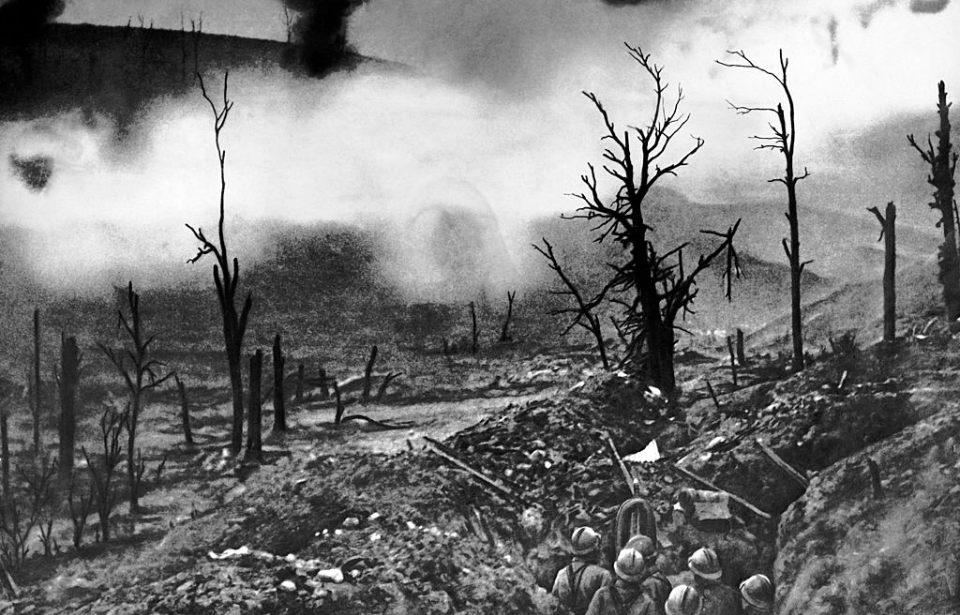Battles often leave lasting marks on the terrain, with traces that serve as valuable clues to the past. This article takes a look at how notable battlefields have changed over time, contrasting their wartime state with their present-day appearance. By examining these transformations, we reveal a powerful visual journey through history, highlighting how these once-devastated locations have evolved or been preserved.
Then and Now: Battle of Verdun
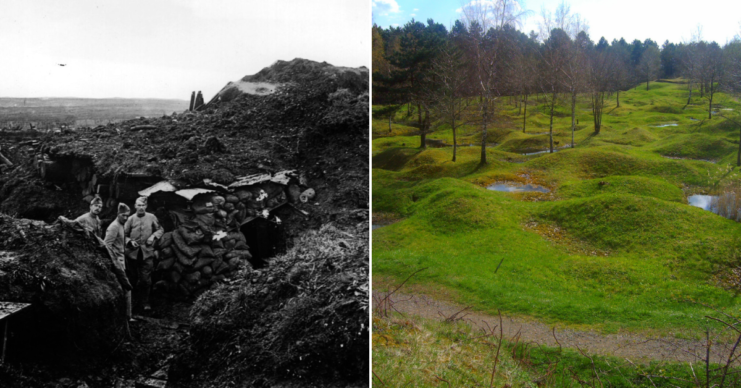
The Battle of Verdun was among the longest and deadliest conflicts of the First World War. In 1916, German forces initiated a major offensive against the French Army. Spanning from February 21 to December 18, 1916, both sides endured heavy casualties. While the exact number remains uncertain, estimates suggest around 400,000 French and 350,000 German casualties.
Of the nearly 800,000 casualties at Verdun, approximately 70 percent were attributed to artillery. During their initial bombardment the Germans fired two million shells, and throughout the 10-month battle both sides launched an estimated 40 to 60 million shells. The devastating impact remains clear in the battlefield’s terrain, as highlighted in these then-and-now images.
Then and Now: Battle of Gettysburg
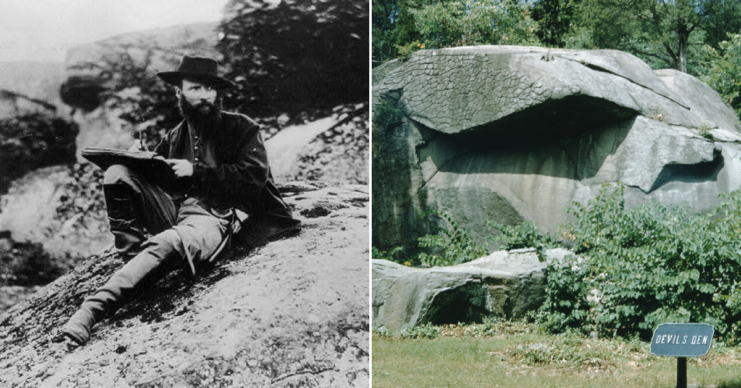
The Battle of Gettysburg was a central clash in the American Civil War, leading to a devastating defeat for the South. Shown above is Alfred Waud, a sketch artist for Harper’s Weekly, seated on a rocky hill at the southern end of Houck’s Ridge on the Gettysburg Battlefield, a location known as “Devil’s Den.”
On the battle’s second day, Devil’s Den became the site of fierce combat during Gen. Robert E. Lee‘s flank attacks. Ultimately, approximately 5,500 Confederate troops from Maj. Gen. Bell Hood’s division seized the area from Maj. Gen. David Bell Birney. Casualties totaled 800 deaths for Union forces and over 1,800 for the Confederates.
Today, Devil’s Den has become a popular tourist destination and one of the most frequently visited battlefields on this list. The site features cannons, memorials, and walking paths, while some of the boulders have been worn smooth due to years of heavy foot traffic.
Then and Now: Omaha Beach
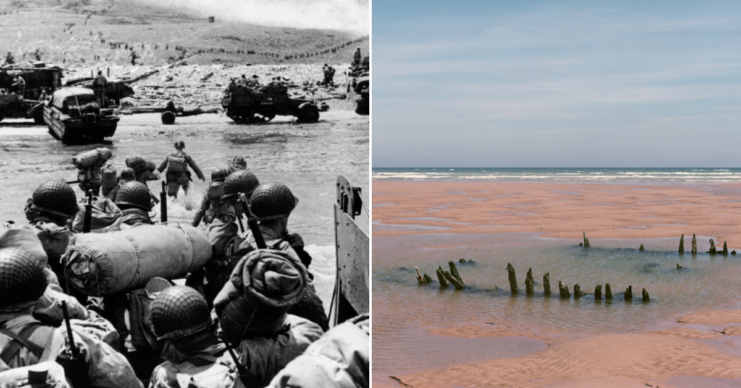
Omaha Beach linked the American and British landing sites during the D-Day landings on June 6, 1944. It’s a five-mile section of the coast of Normandy, and was the most restricted and heavily-defended beach during the Allied invasion. The waters and beach were heavily mined by the Wehrmacht, with numerous fighting positions in the area supported by an extensive trench system.
Some of these fortifications can still be seen protruding from the sand, as shown in the above battlefield then and now images.
Then and Now: Battle of Stalingrad
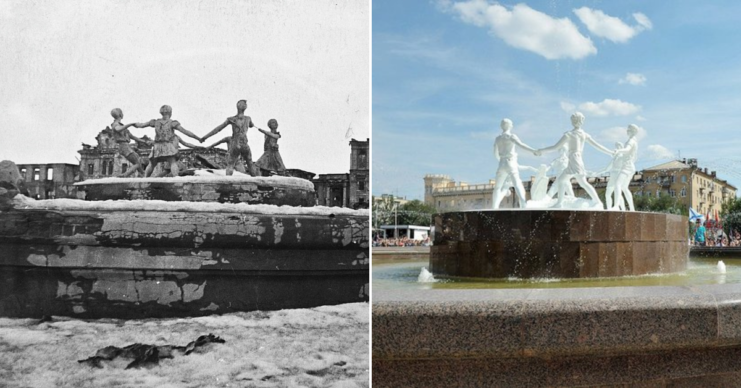
The Battle of Stalingrad signaled the halt of Germany’s eastward push and is widely regarded as a decisive moment in favor of the Allies during World War II.
At the time, Stalingrad—now Volgograd—was a vital manufacturing city, supplying the Soviet war effort with weapons and machinery. Though a devastating bombing campaign left much of it in rubble, the ruins provided the Red Army with defensive advantages, including sniper positions and urban cover.
The photograph above captures the city’s center, with the train station visible in the distance. In the foreground stands the Barmaley Fountain, which was restored after the conflict but later removed in the 1950s. A replica was installed in 2013 near its original spot, creating a powerful visual link between the war-torn past and the city’s present.
Then and Now: Battle of the Somme
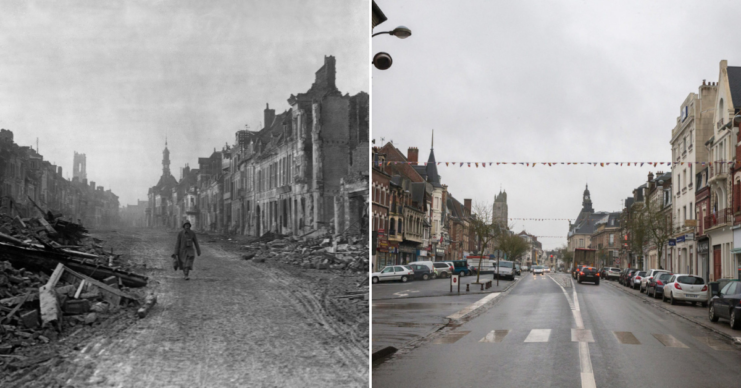
The Battle of the Somme was one of the bloodiest engagements of the First World War. It was an unsuccessful Allied offensive against German forces on the Western Front. By the end of the battle in November 1916, nearly one million Allied and German soldiers had been either killed or wounded.
The operational objective of the Anglo-French forces was to capture the cities of Pèronne and Bapaume, to root out the Germans. However, the Allies were unsuccessful in doing so, and the enemy troops maintained their positions over the winter.
Pictured above in this striking then and now composition of the battlefield is a German soldier walking through the destroyed city of Pèronne (on the left) and the rebuilt city in 2016.
Then and Now: Tet Offensive

The Tet Offensive during the Vietnam War consisted of multiple attacks staged by North Vietnamese and carried out on five major South Vietnamese cities and numerous villages and towns. The Cho Lon district of Saigon (the above left photo) was a particularly bloody area of the fighting.
Then and Now: Battle of Okinawa
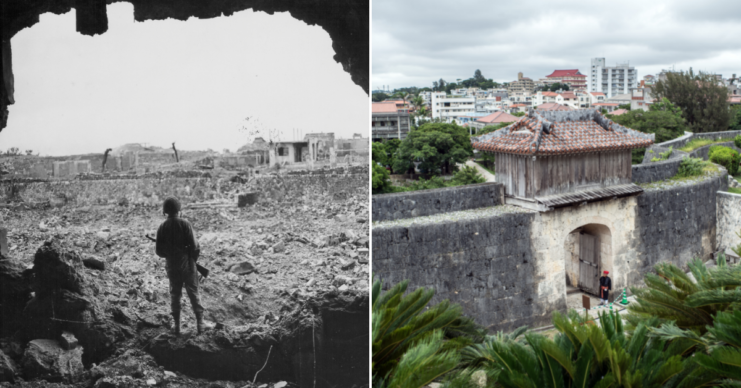
The Battle of Okinawa was one of the bloodiest battles in the Pacific Theater during the Second World War. The engagement was defined by terrible ground fighting, intense naval battles, kamikaze warfare and a high civilian death toll.
More from us: Digby Tatham-Warter: The British Major Who Disabled A German Tank With An Umbrella
There remains a massive US military presence in Okinawa today, although it’s no longer an occupying force – rather, they’re there as part of a symbiotic partnership with modern-day Japan.
